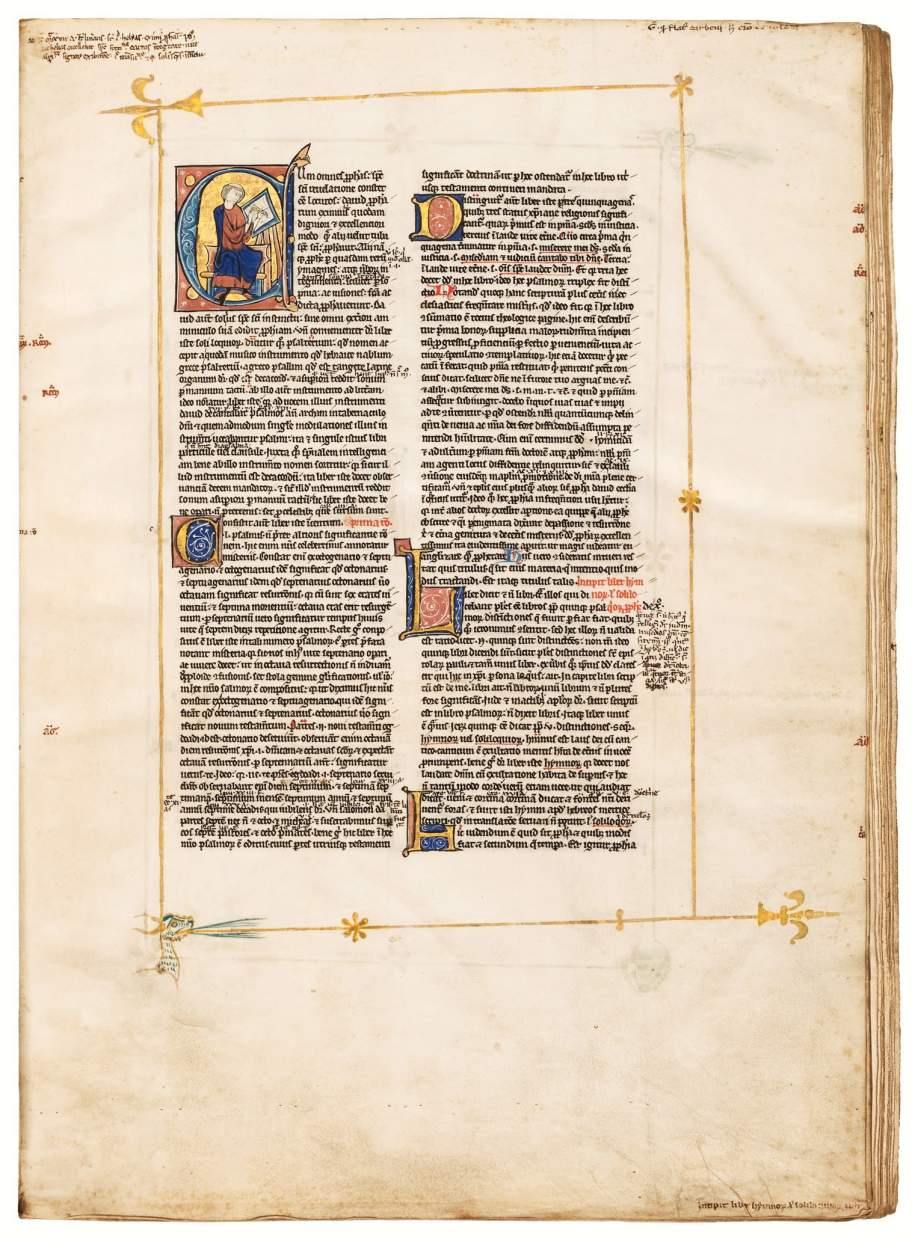

Petrus Lombardus, Glossatura magna in psalmos,
Manuscript in Latin on vellum, illuminated by the workshop of the Vie de Saint Denis. Northern France, Paris, c. 1230-50 and Spain, c. 1460.


Petrus Lombardus, Glossatura magna in psalmos,
Manuscript in Latin on vellum, illuminated by the workshop of the Vie de Saint Denis. Northern France, Paris, c. 1230-50 and Spain, c. 1460.


Petrus Lombardus, Glossatura magna in psalmos,
Manuscript in Latin on vellum, illuminated by the workshop of the Vie de Saint Denis. Northern France, Paris, c. 1230-50 and Spain, c. 1460.


Petrus Lombardus, Glossatura magna in psalmos,
Manuscript in Latin on vellum, illuminated by the workshop of the Vie de Saint Denis. Northern France, Paris, c. 1230-50 and Spain, c. 1460.


Petrus Lombardus, Glossatura magna in psalmos,
Manuscript in Latin on vellum, illuminated by the workshop of the Vie de Saint Denis. Northern France, Paris, c. 1230-50 and Spain, c. 1460.


Petrus Lombardus, Glossatura magna in psalmos,
Manuscript in Latin on vellum, illuminated by the workshop of the Vie de Saint Denis. Northern France, Paris, c. 1230-50 and Spain, c. 1460.

A highly-valued source of exegesis and knowledge for theologians, this well-preserved copy of the Psalter commentaries by Peter Lombard is a deluxe copy. Illuminated in the workshop of the Vie de Saint Denis, the artist has a distinctive touch with pale, almost white, flesh tones and delicate facial features. This is one of the most prolific workshops in Paris from 1230 to 1250, marking the period between the early Bible Moralisée and mid-century styles.
It is possible that the full burnished gold borders were Spanish editions, as the book evidently came to Spain to lay in the noble library of the marquises of Astorga, where it received its present binding.
Peter Lombard (c. 1095-1160) was probably the first truly magisterial teacher of the emerging schools of Paris, which had become the greatest of all medieval universities by the early 13th century. The present manuscript, a comprehensive gloss of the Psalms, presents the Biblical text in short sections clinging to the left of a column, while the catena commentary runs continuously beside and around them. The penwork of the fleuronné initials develops in long extensions and tendrils, mostly in string/chord-like parallel lines ending in spirals typical of the period between 1230 and 1250.



